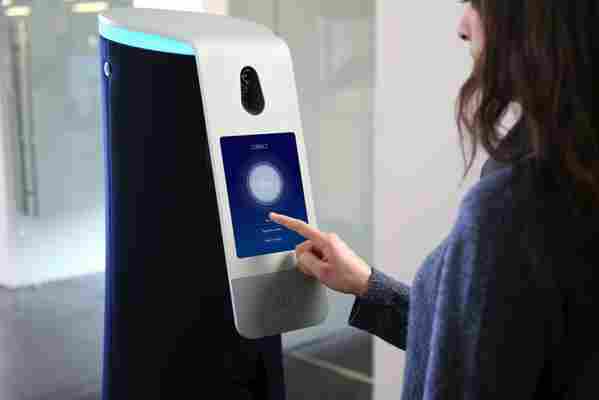Yves Béhar’s Cobalt Security Guard Is the Future of Robotics
The robots are coming for our offices, but not in the way you might think. Today, Yves Béhar and Cobalt , a robotics company formed by alums of GoogleX and SpaceX, unveiled a robotic security device meant for the office. The device, which features such cutting-edge technology as 360-degree cameras, semantic mapping, machine learning, and deep neural networks, is meant to work with human security officers to upgrade office security exponentially while essentially redefining the relationship between humans and machines.
"One of the core fundamental values of Cobalt is to enable human-to-machine interactions," said Cobalt cofounder and CTO Erik Schluntz in a statement. Instead of designing a robot to replace human workers, as most often predicted in dystopian views of the future, Béhar and Cobalt seek to enhance their relationship. "It’s really a robot that works in tandem with a human, which I think is very important," Béhar tells AD. "All the robots we’ve worked on, be it the SNOO cradle or the Ori robotic room , what we’re trying to communicate is that this is a partnership between a human and a robot. It’s not about robots replacing humans, rather enhancing their abilities."

Designer Yves Béhar
The idea is that Cobalt, whose funding was led by Bloomberg Beta and Promus Ventures, will put itself in situations humans would want to avoid, be it confronting potential danger, checking for fire safety, or exploring other unknowns. Besides its safety functions, the robot can also serve as a sort of in-house office concierge. "We wanted it to have a presence that is much more friendly than one that would be purely security focused," Béhar says. "In many ways the concierge abilities are just as important as the safety abilities. It can provide information, directions, guide visitors to a place within the office. We want it to become a familiar presence within the office space."

The robot is controlled via a touchscreen panel.
This idea plays heavily into Cobalt's design, too. When deciding on its elegant, conical shape, Béhar looked less to familiar robot tropes and more to furniture he's designed for Herman Miller . "Since we wanted Cobalt to be this friendly presence in the office, we made it look akin to our furniture or a piece that is part of the environment, rather than an enforcer type. We built the structure to be entirely surrounded by this fabric skirt, so that it has a much softer demeanor. It's a unique materiality for a robot, mixing machine and fabric."
His aesthetic choices tie back into the idea of changing the way humans view robotics and AI. "I really believe that these kinds of products need to be designed beyond the Hollywood clichés that have defined in many ways the design of robots," Béhar says. "The plastic skin, the humanoid shape—these are all elements that I think as designers we need to discard for the benefit of finding both functionality and an aesthetic that is actually contextual to what the robot does."